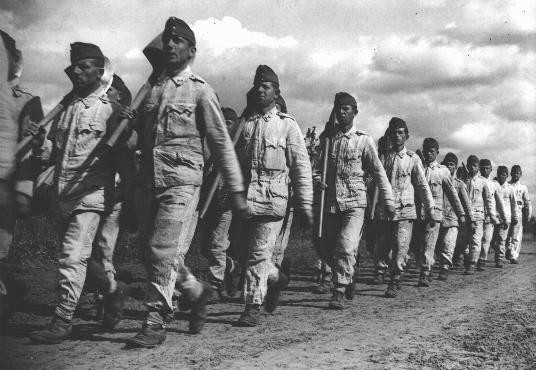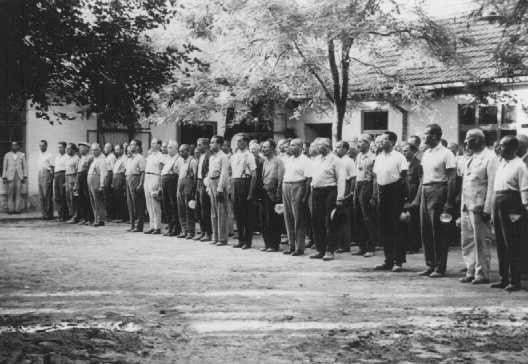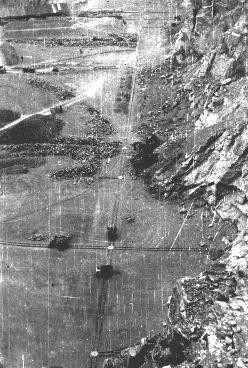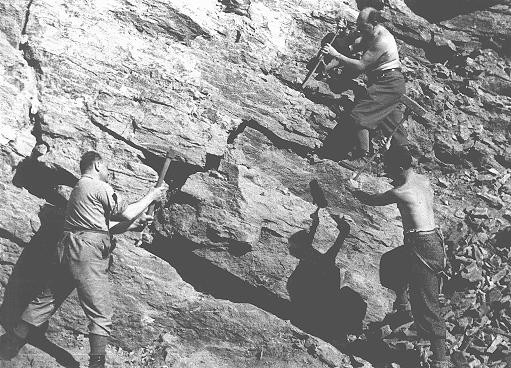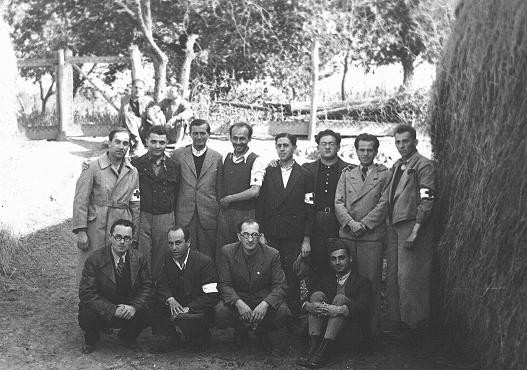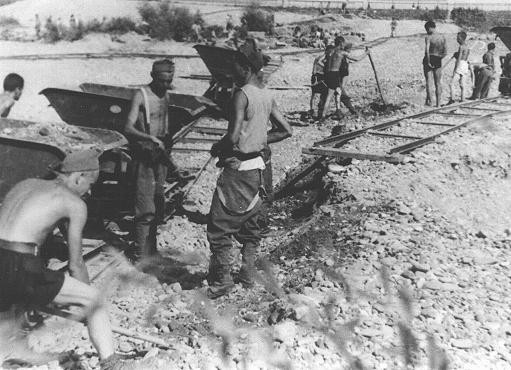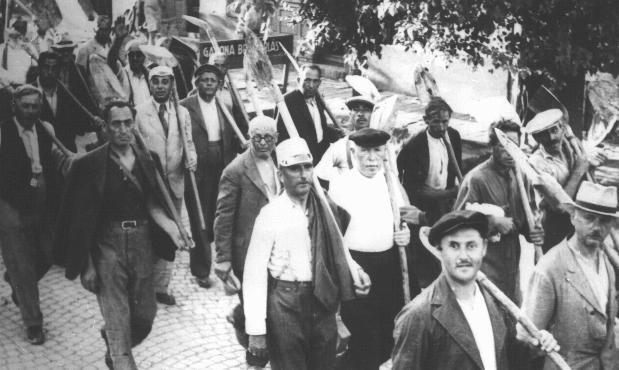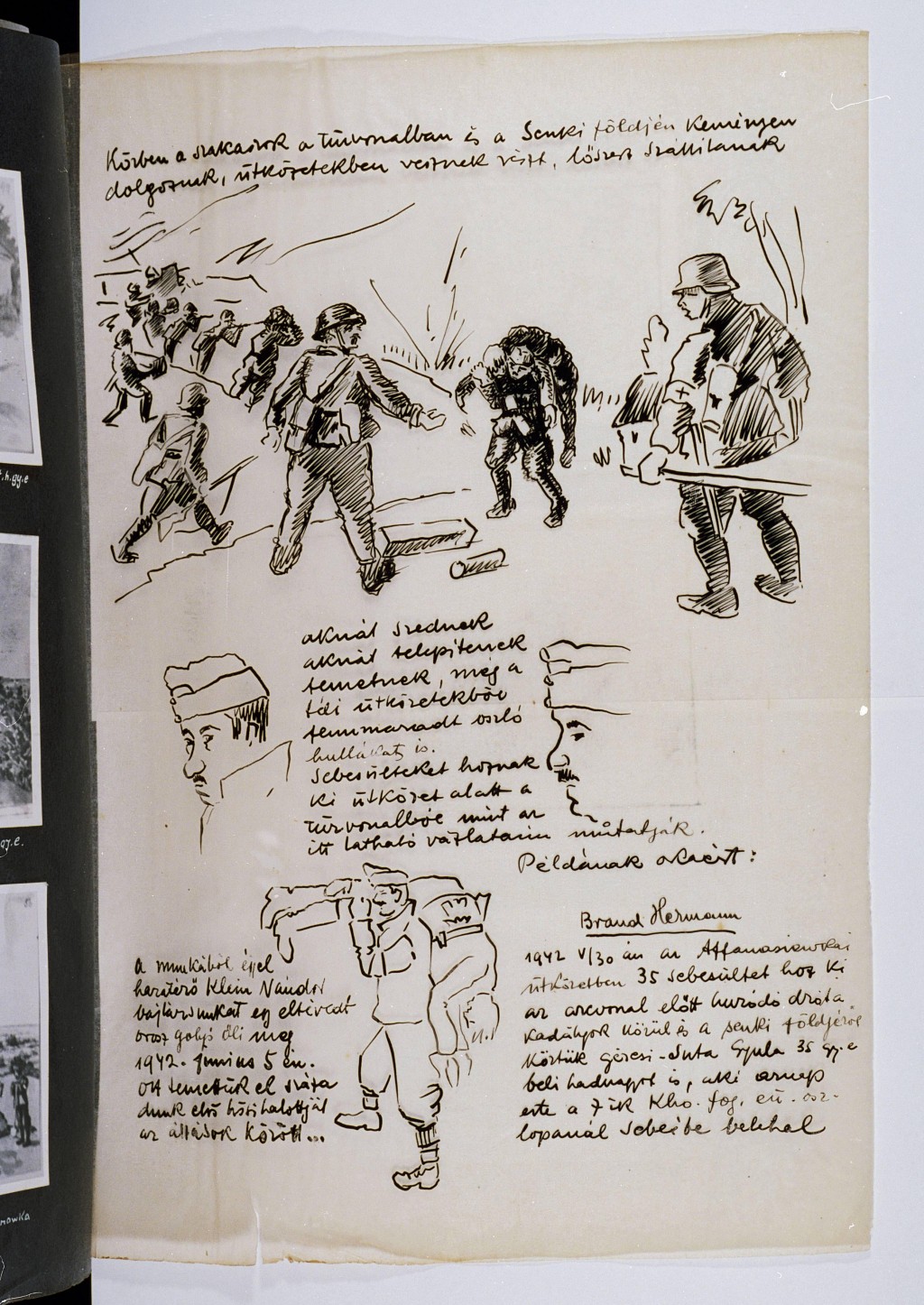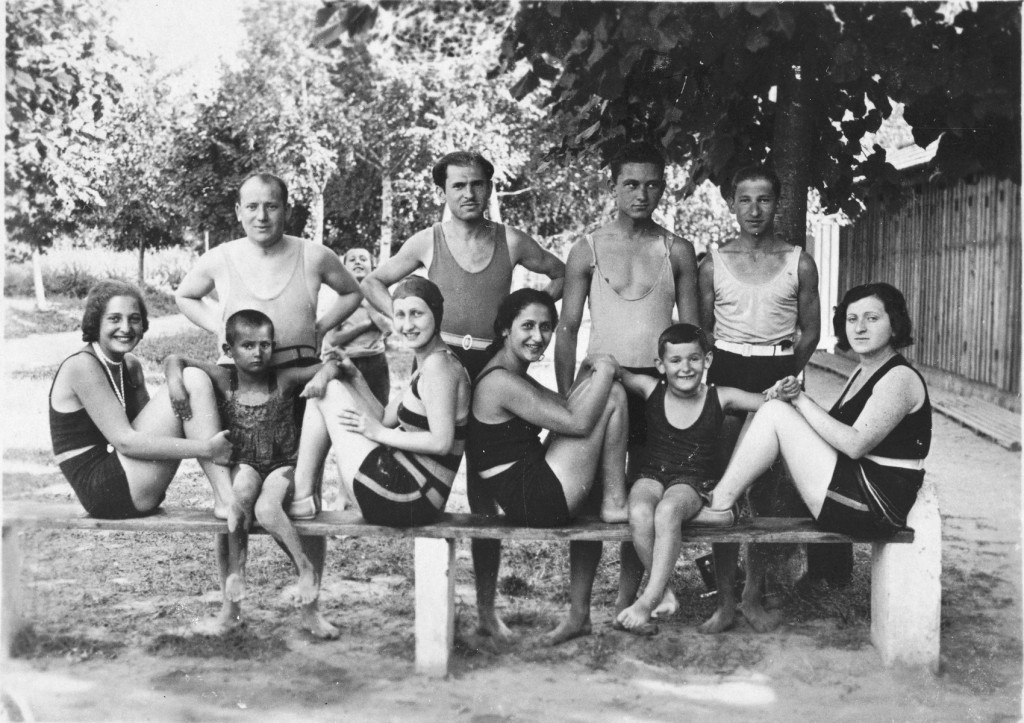
Hungary before the German Occupation
Hungary after World War I
Hungary had been on the losing side of World War I. After the announcement of punitive peace terms to be imposed on Hungary (which included the loss of 66 percent of Hungary's prewar territory) were announced in 1919, the postwar coalition government resigned. The reins of power fell to a Socialist-Communist coalition under Communist leader Bela Kun. Kun proceeded to establish a short-lived "Soviet Republic."
When the Kun regime collapsed following a Romanian invasion in June 1919, Admiral Miklos Horthy, who had been an officer in the Austro-Hungarian navy, came to power at the head of a conservative-nationalist coalition. This coalition undid most of the democratic reforms promulgated in Hungary immediately after World War I. Assuming the position of regent for the Habsburg king who would never return to Hungary, Horthy presided for the next 24 years over an authoritarian, almost feudal system of aristocratic rule, which nevertheless had a functioning parliament and permitted political opposition. Among those who opposed the conservative-aristocratic oligarchy were radical nationalists and fascists of middle-class and working-class origin. Many of these politicians called for more radical steps to be taken in "solving the Jewish Question."
Influence of Germany

Pressured by domestic radical nationalists and fascists, Hungary fell increasingly under the influence of Germany as the Nazi regime consolidated itself in the 1930s. When Germany began to redraw national boundaries in Europe, Hungary was able to regain territory (with German and Italian help). This territory included southern Slovakia from Czechoslovakia (1938), Subcarpathian Rus from dismembered Czechoslovakia (1939), northern Transylvania from Romania (1940), and the Backa region from dismembered Yugoslavia (1941). In November 1940, Hungary joined the Axis alliance. Hungarian troops participated alongside German troops in the invasion of Yugoslavia (April 1941) and the Soviet Union (June 1941).
Jewish Population
According to a 1941 census, Hungary, including the recently annexed territories, had a Jewish population of 825,000, less than 6 percent of the total population. This figure included 100,000 converts to Christianity who, under Hungarian race laws passed between 1938 and 1941, were classified as Jews. The Hungarian racial laws were modeled on Germany's Nuremberg Laws. They reversed the equal citizenship status granted to Jews in Hungary in 1867. Among other provisions, the laws defined "Jews" in so-called racial terms, forbade intermarriage between Jews and non-Jews, and excluded Jews from full participation in various professions. The laws also barred employment of Jews in the civil service and restricted their opportunities in economic life.
Forced-Labor Service
In 1939, the Hungarian government, having forbidden Jews to serve in the armed forces, established a forced-labor service for young men of arms-bearing age. By 1940, the obligation to perform forced labor was extended to all able-bodied male Jews. After Hungary entered the war, the forced laborers, organized in labor battalions under the command of Hungarian military officers, were deployed on war-related construction work, often under brutal conditions. Subjected to extreme cold, without adequate shelter, food, or medical care, at least 27,000 Hungarian Jewish forced laborers died before the German occupation of Hungary in March 1944.
Before the German Occupation
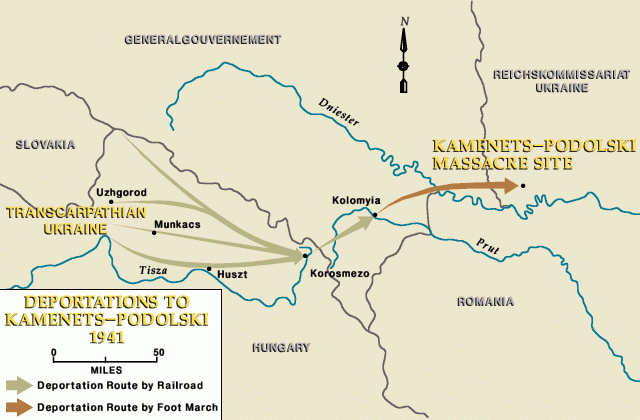
In the summer of 1941, Hungarian authorities deported some 20,000 Jews, most of whom resided in Subcarpathian Rus and none of whom had been able to obtain Hungarian citizenship. These Jews were deported to Kamenets-Podolski in the German-occupied Ukraine, where they were shot by Nazi Einsatzgruppe detachments. In January 1942, Hungarian military units murdered 3,000 Jews and Serbs in Novi Sad, the major city in Hungarian-annexed Yugoslavia. When the German government began to pressure the Hungarians in 1942 to deliver Jews who were Hungarian citizens into German custody, however, Horthy's prime minister, Miklos Kallay, refused to deport the Hungarian Jews, despite significant pressure from the domestic radical right. Ironically, most Hungarian Jews were thus spared deportation prior to the German occupation in 1944, as the Nazis did not directly control the internal activities of their allies.
Critical Thinking Questions
- What pressures and motivations influenced Hungarian officials and citizens to persecute Jews before the Nazis took over in March of 1944?
- Did the Hungarian government's choices, laws, and actions mirror those of Nazi Germany? How?


